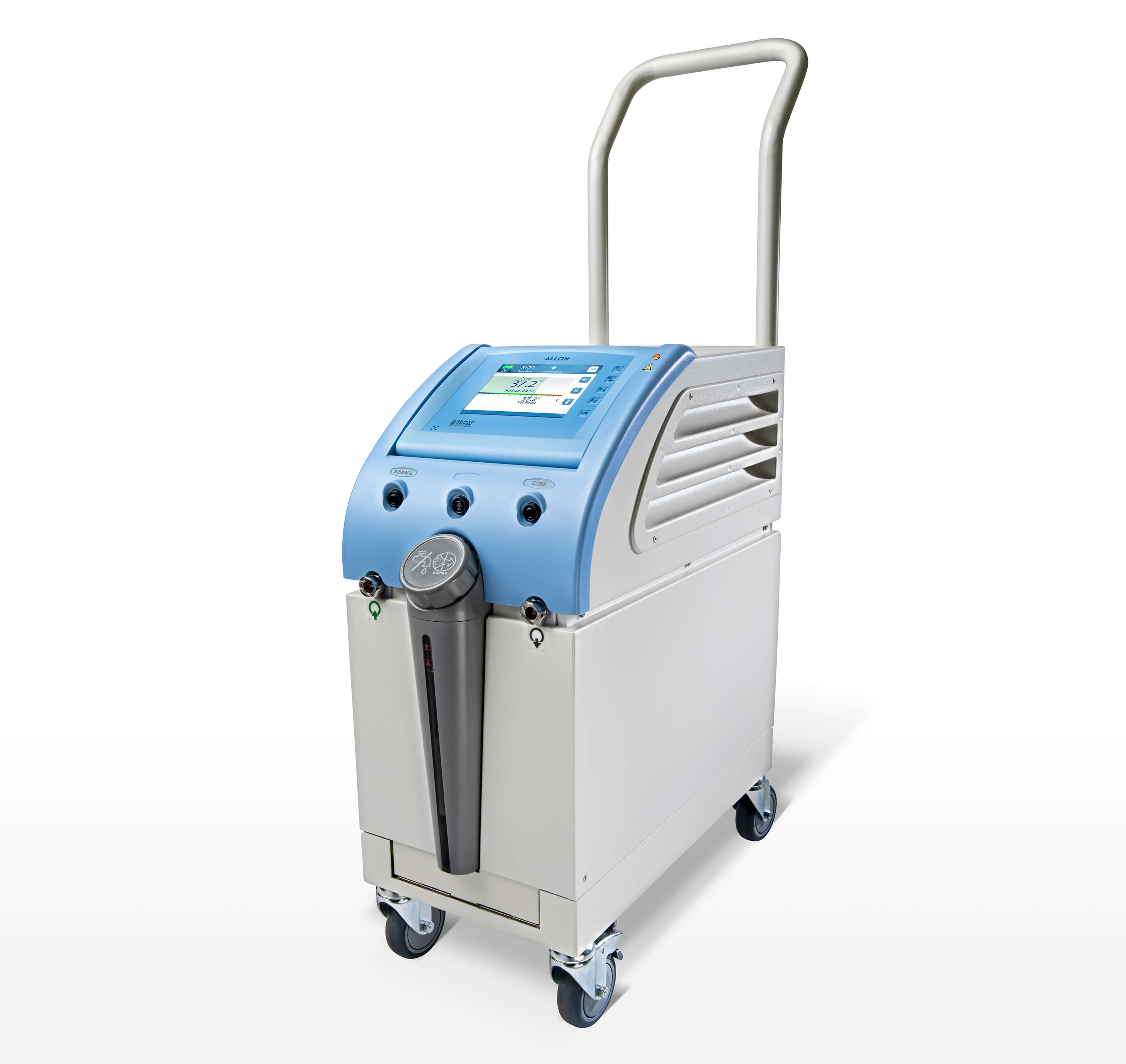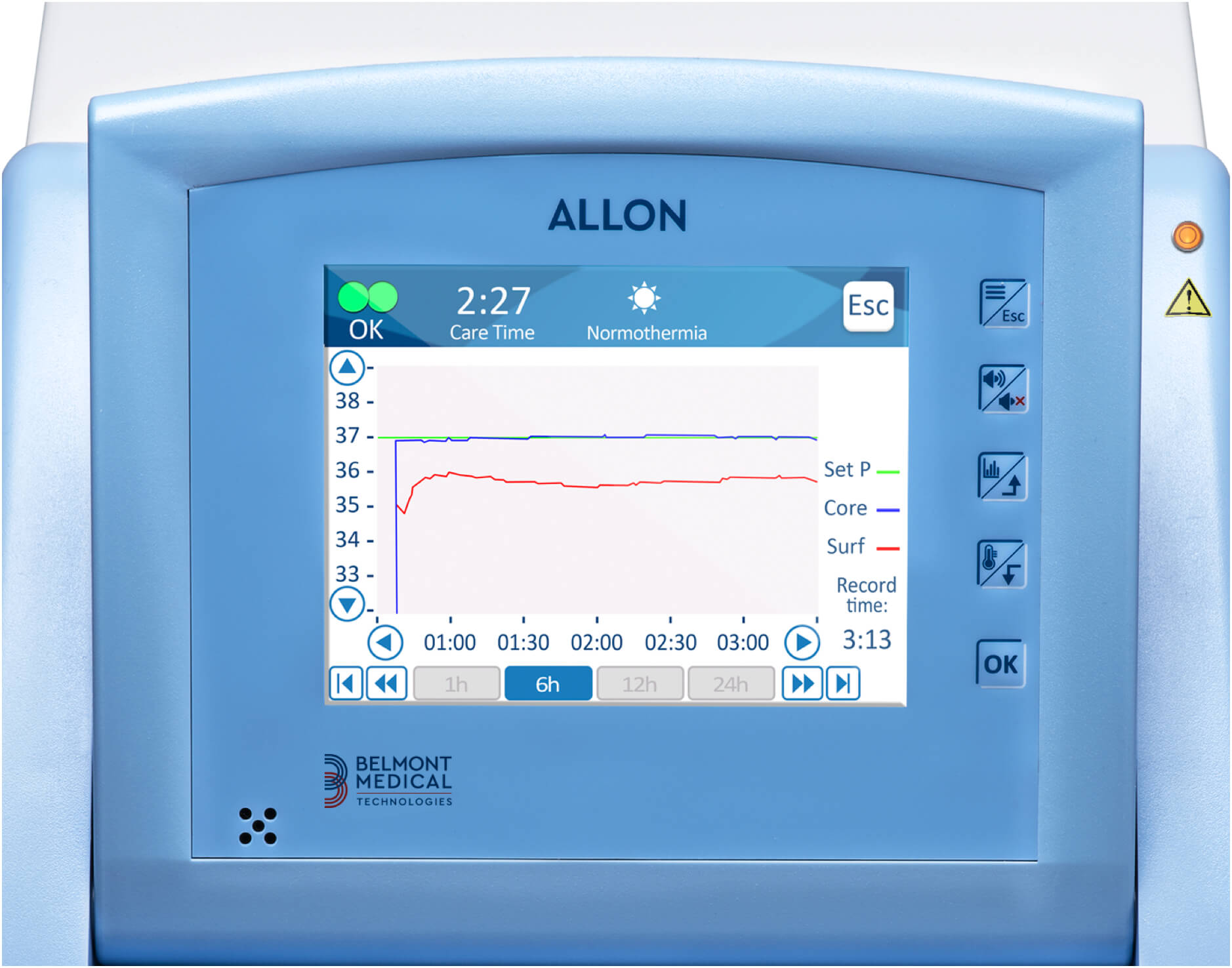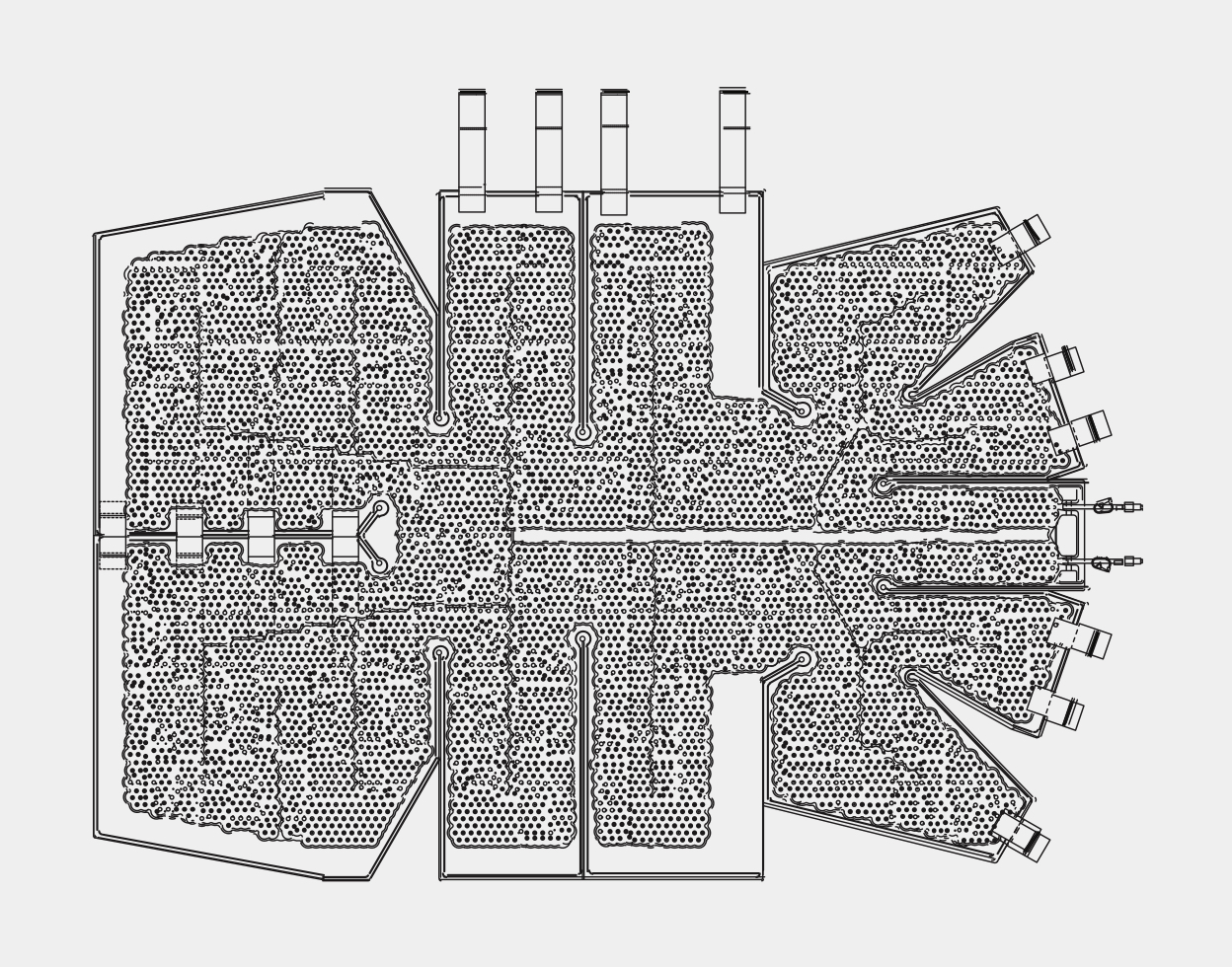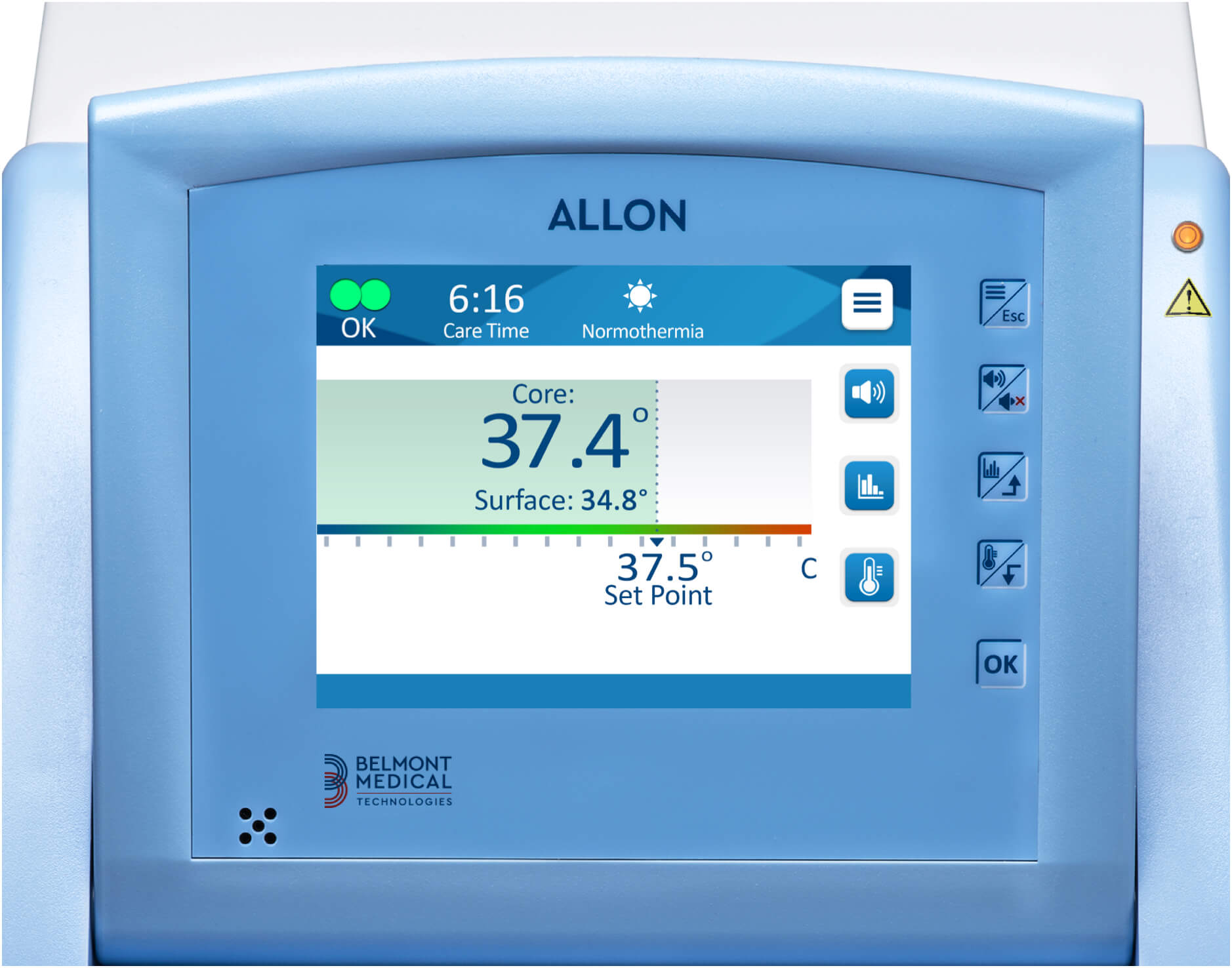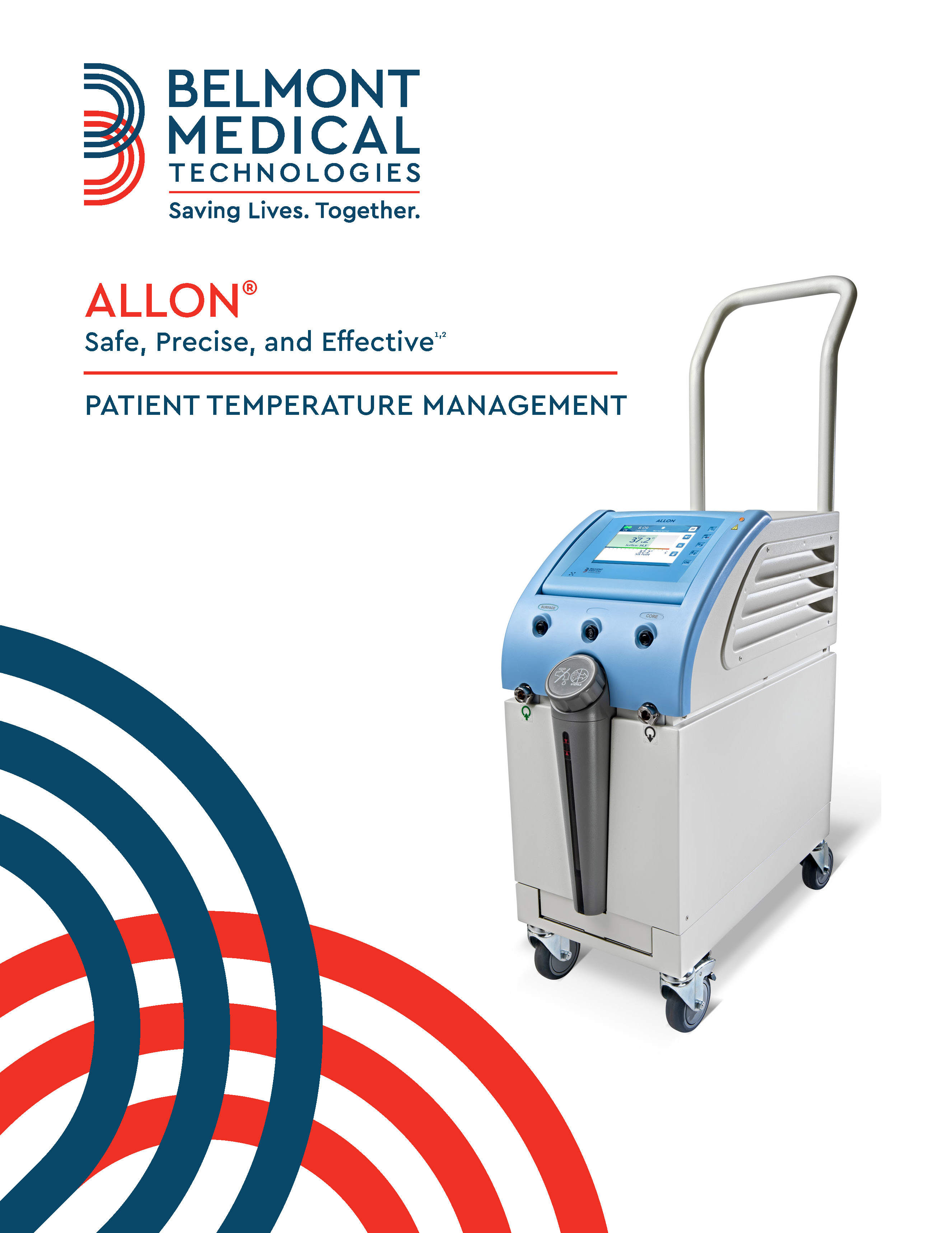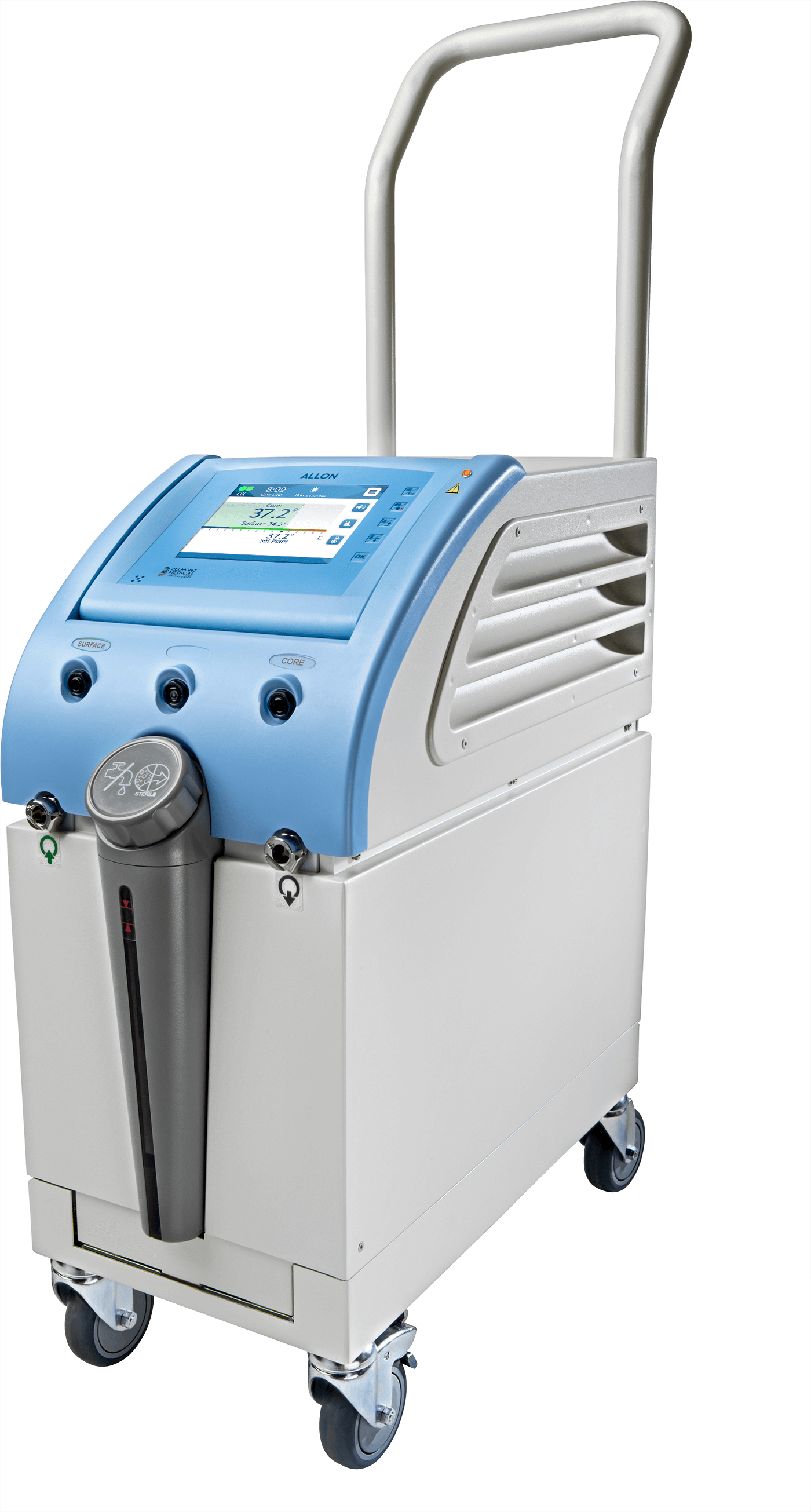

Allon®
Safe, simple and effective, Allon enables clinicians to consistently maintain patient body temperature throughout all stages of the perioperative continuum. This non-invasive, temperature management system helps surgical teams achieve more predictable outcomes. Allon’s algorithm-driven heat pump supplies heated water through a closed-loop system to the ThermoWrap® disposable patient garment. Core and surface temperature sensors provide continuous patient temperature feedback to enable thermal monitoring and regulation.
Allon is helping improve clinical outcomes in these areas
News & Events
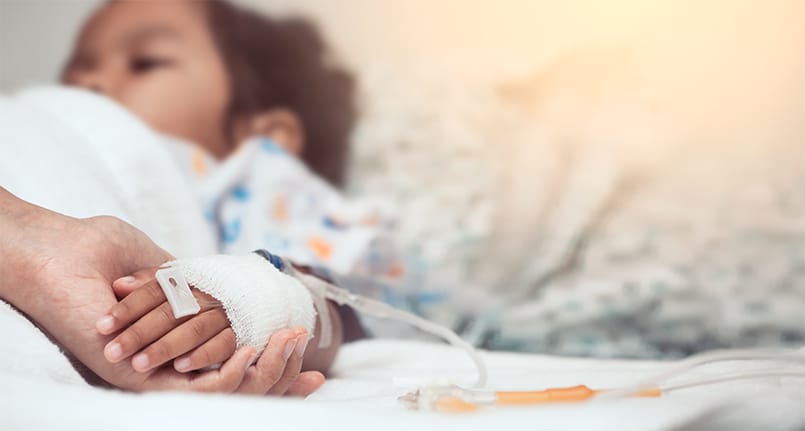
Ready to bring Belmont’s trusted technology to your organization?
- Rohrer B. , Penick E. , Zahedi F. , and et al. , Comparison of forced-air and water circulating warming for prevention of hypothermia during transcatheter aortic valve replacement. PLoS one, 2017; 12(6): e0178600.
- Nesher, N., Uretzky, G., Insler, S., Nataf, P., Frolkis, I., Pineau, E., … Weinbroum, A. A. (2005). Thermo-wrap technology preserves normothermia better than routine thermal care in patients undergoing off-pump coronary artery bypass and is associated with lower immune response and lesser myocardial damage. The Journal of Thoracic and Cardiovascular Surgery, 129(6), 1371-1378. doi:10.1016/j.jtcvs.2004.08.021
- Rohrer, B., Penick, E., Zahedi, F., Tighiouart, H., Kelly, B., Cobey, F., & Ianchulev, S. (2017). Comparison of forced-air and water-circulating warming for prevention of hypothermia during transcatheter aortic valve replacement. PloS one, 12(6), e0178600. https://doi.org/10.1371/journal.pone.0178600
